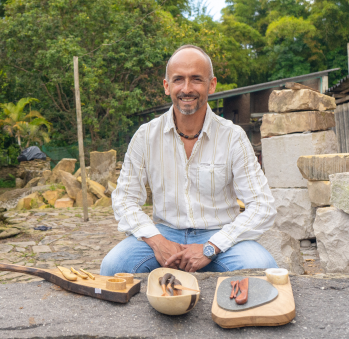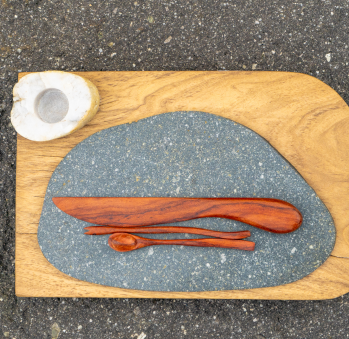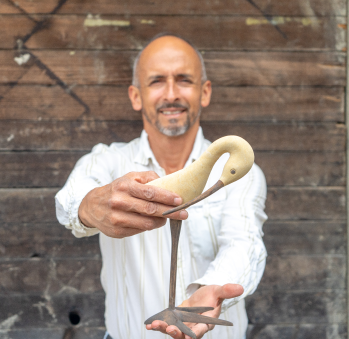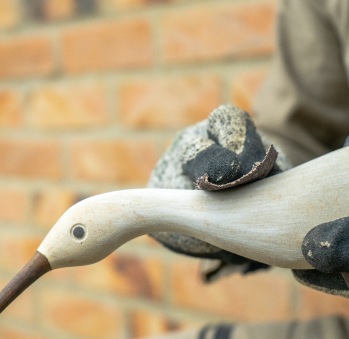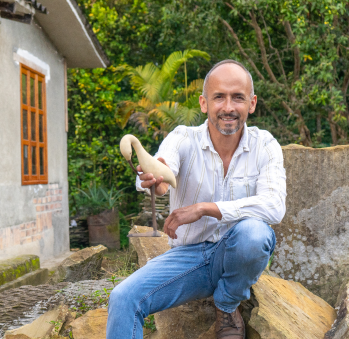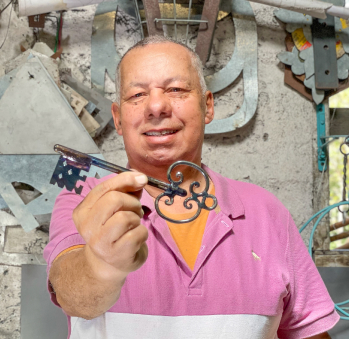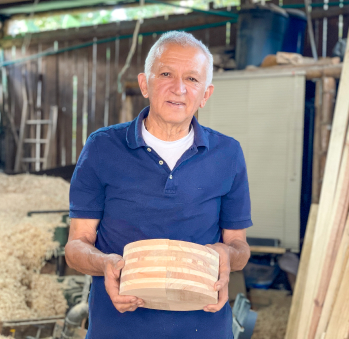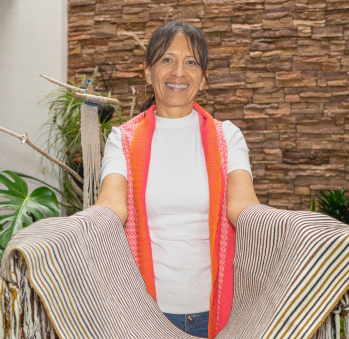Sandro Velasco
Workshop: Morfo piedra de cantera
Craft: Trabajo en piedra
Trail: Cauca Route
Location: Popayán, Cauca
To see Sandro Velasco’s work is to take an immense journey through more than 35 years of stonemasonry, or stone carving. Today, it is easy to marvel at the little quinine bird seen in his workshop. Its blue beak, yellow breast, and green feathers are simply enchanting. Numerous design awards have passed through his hands. These acknowledgements do not swell his vanity one bit. Quite the contrary: he is generous, detailed, and careful. It is clear to him that to reach the place where he is right now has required a lifetime of different experiences working with his raw materials. That material is the limestone that taught him everything and that came to him as an inheritance from their peculiar family trade: the carving of tombstones, which resulted in his mastery of the stone.
His childhood memories of when he used to bring lunch to his father (Don Anuar) to the quarry and of how he used to sit there watching him work come flooding back as he speaks. His father was a perfectionist. Sandro would sneak into his activities, holding his level while he measured everything. Finally, he took his own pot and chisel and learned the thousand and one secrets of how to choose and work a stone. He was discovering which is their softer side, which are harder or “bojosas” and which are softer and more noble or “amelcochadas”. He also learned what they are good for. They taught him how to remove the stone, or start to work it, leaving it as a block ready to carve, a task that has quite a technique behind it. Living in Popayán also opened another universe to him: that of the patrimonial past. Since this is a city with such a striking colonial past, stonework for the doorways and courtyards of the houses became his daily bread and brought him a good reputation. Thus, the trade also gave him perspective on another front: that of architectural restoration, conservation, and maintenance. This work was given to those who were most skilled in the masonry trade, and among them were his father and his colleagues. For him, going being with his father during these jobs had an extremely significant educational value.
He remembers as if it were yesterday when he was just an enthusiastic youngster. He marveled at the restoration architects who showed him the plans of the stones, as well as the moldings and carved details that were being replaced to bring columns, capitals, walls, or bridges back to life. “You were stunned to see the traces of Rome, Greece and Egypt in the designs of those stones.” He also recalls what no one expected: the earthquake of 1983 that destroyed half the city. The historic center suffered greatly because many of its constructions, more than three centuries old, as well as an infinite number of walls, collapsed or were critically affected. “That’s where we made a great contribution and put our knowledge to work,” he says, remembering those hard times. Those were long years working in this field.
At the end of the nineties, he enrolled in the Faculty of Plastic Arts. He wanted to broaden his horizons and, although architecture had always enticed him, in the end, he decided to study art. Thanks to the conversations and encouragement he got from his teachers, he took on the challenge of fusing stone with other materials. Of course, he wanted to become a sculptor like Michelangelo. He later lowered his expectations of himself and rather dedicated himself to creating his own identity. He tried out what he could do with metal, glass, resins, and wood. Although he did not graduate, all those experiences inspired him to take the most important turn of his career as a craftsman. He dedicated himself much more to design and home décor pieces. These have earned him numerous awards for best designs, including the Manos de Oro or Traza Artesanal, where he fused stone and wood.
He has begun to explore new techniques such as sandblasting, which is a method of carving using pressure. This is how he continues journeying through the path of sculpture. This is the path of this restless man who never stops learning and loves discovering everything about the raw materials that nature has to offer.
Craft


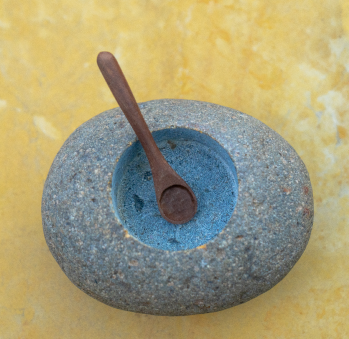













Artisans along the way
Artisans along the way
No puede copiar contenido de esta página








































